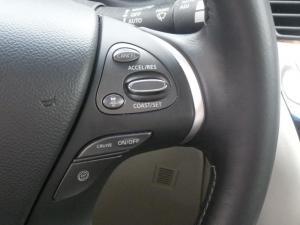California Department of Motor Vehicles (DMV) Automated Vehicle Regulations

Adding vehicle-to-vehicle (V2V) communications to an adaptive cruise control (ACC) system turns it into a cooperative ACC (CACC) system. The idea behind CACC is not only to have a vehicle’s cruise control system maintain a proper following distance behind another car by slowing down once it gets too close, (ACC), but also to allow cars to “cooperate” by communicating with each other while in the adaptive cruise control mode. The result is that cars can follow more closely, accurately, and safely, with braking and accelerating done cooperatively and synchronously. This multi-phase project was sponsored by Nissan Motor Co. A key component in the research was an exploration of “gap setting” (selecting the distance to another car) by the test subjects from the general public who drove our original CACC test vehicles. Experiments with four CACC vehicles showed the great improvement in car following stability compared to the same four vehicles using their production ACC controllers without V2V cooperation.
